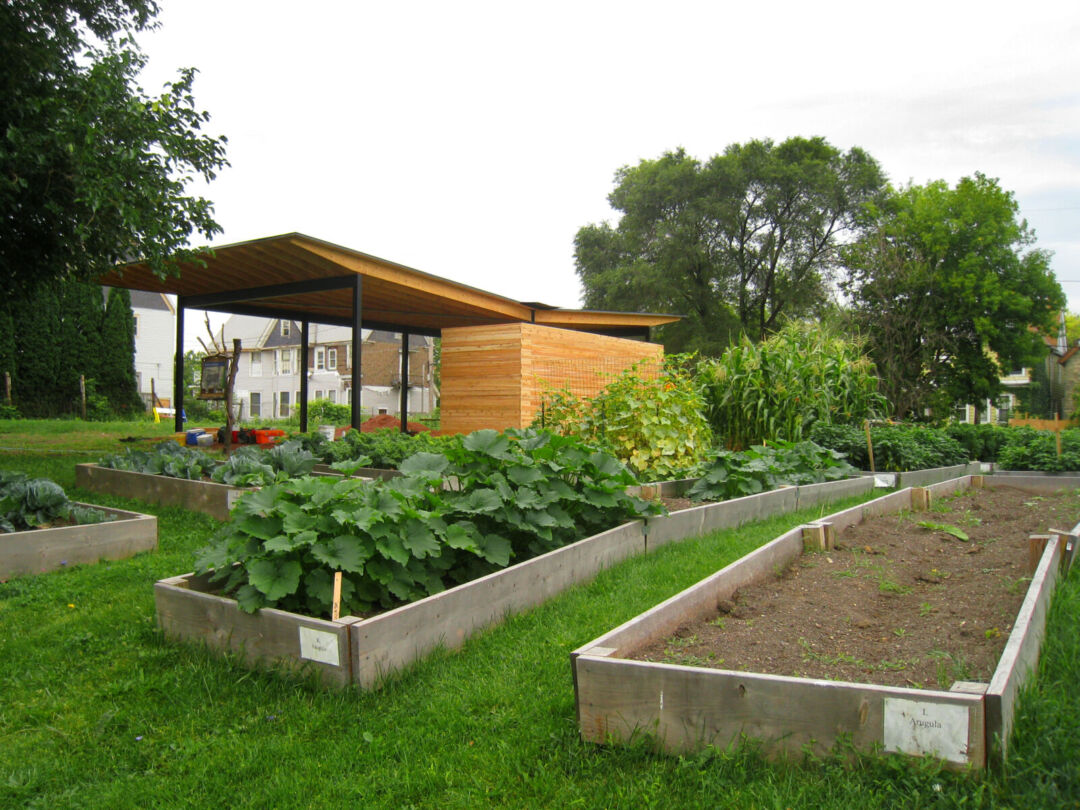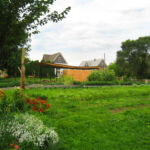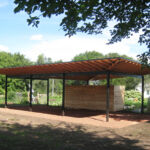Guest House Garden Pavilion in Milwaukee
Project's Summary
The Guest House Garden Pavilion stands as a remarkable blend of functionality and community spirit in Milwaukee's Cream City Gardens. This innovative structure is designed not only to serve as an infrastructure component for the collection and retention of stormwater but also as a vital gathering point for community members and gardening enthusiasts. With the capacity to collect up to 550 gallons of water for irrigation use, the pavilion plays a crucial role in promoting sustainable practices in urban farming.

Constructed with a harmonious mix of steel and wood, the pavilion features a broad roof that creates an impressive 880 square foot catchment area. This thoughtfully designed roof directs rainwater into a wood-clad cistern, which is then utilized for the gardens on site. The integration of this pavilion into the landscape reflects a commitment to environmental stewardship, demonstrating how innovative infrastructure can elevate urban living while addressing the challenges of water management.

Every year, the pavilion is expected to collect around 17,220 gallons of stormwater, significantly contributing to the irrigation needs of the half-acre urban farm tended by guests of the Guest House of Milwaukee. This initiative not only enhances the agricultural productivity of the gardens but also educates visitors about the importance of sustainable water practices and resource conservation in urban environments.

The pavilion has become more than just a structure; it is a symbol of the Guest House’s rehabilitation and education programs. By fostering community engagement and providing a shaded respite from the sun, it serves as a gathering point where individuals can connect, learn, and share their passion for gardening. The Guest House Garden Pavilion stands as an iconic representation of how architecture can play a transformative role in urban areas, emphasizing the significance of green spaces amid the cityscape.

In conclusion, the Guest House Garden Pavilion embodies the principles of sustainability, community, and innovation. As a part of the Cream City Gardens, it not only fulfills practical needs for water conservation but also enhances the overall experience of guests and community members. This pavilion is a testament to the impact that well-designed infrastructure can have on improving our urban environments and fostering a culture of care for both people and the planet.
Read also about the Asian Cairns: Sustainable Farmscrapers for Urban Living project





